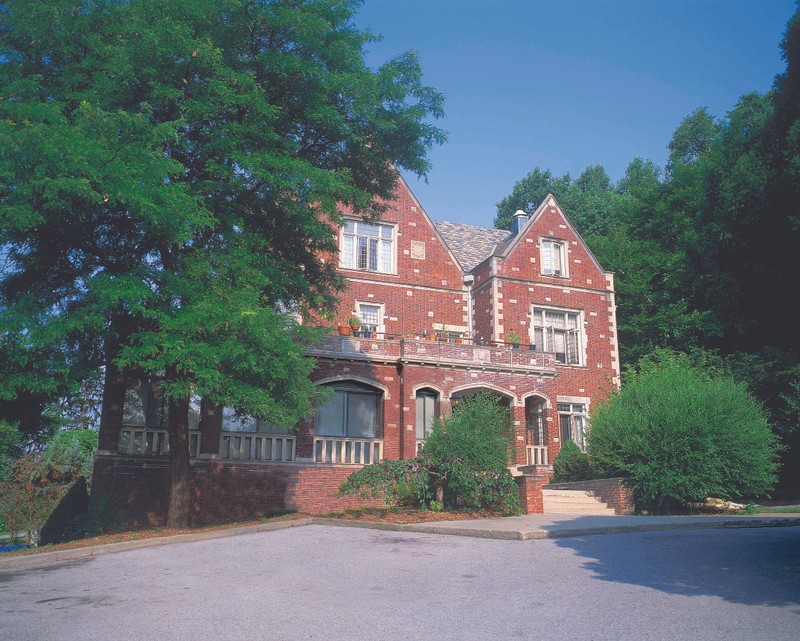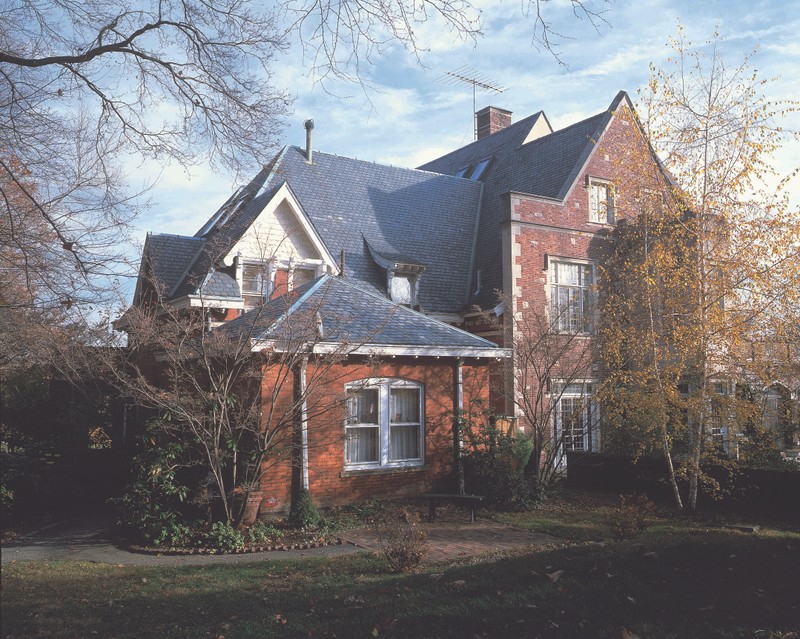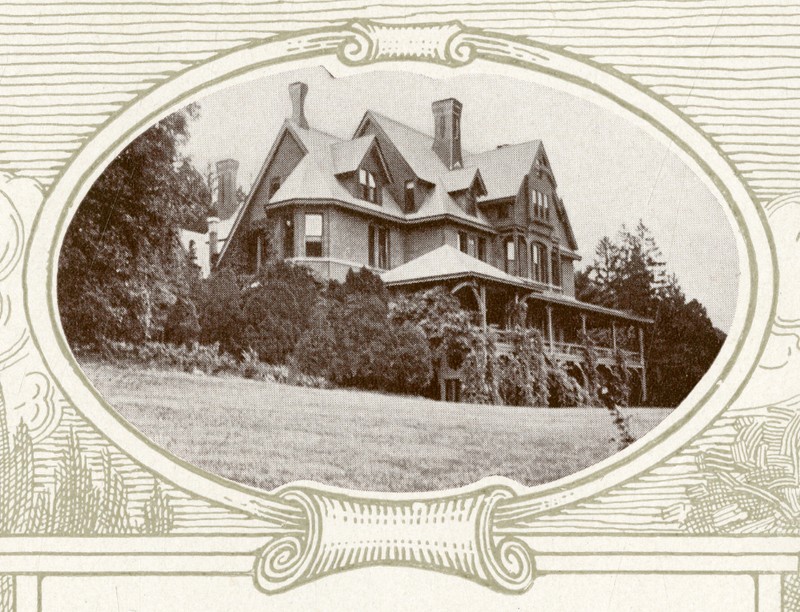Beecher-McFadden Estate
Introduction
Text-to-speech Audio
Images
Beecher-McFadden Estate.

Beecher-McFadden Estate.

Beecher-McFadden Estate in the early 20th century.

Backstory and Context
Text-to-speech Audio
In the summer of 1875, Henry Ward Beecher was struggling with his career, as well as his personal life. At the time he was being sued by a former close friend, Theodore Tilton, who accused him of adultery with his wife. Beecher purchased 48 acres of land and stayed in a small cottage until he decided to build a larger house. He named the 20 room mansion, Boscobel. He used it as a vacation home, spending his summers and leisure time at the estate.
Boscobel was designed in a "variation of High Victorian Gothic that has come to be called the Stick style. It featured prominent trusses in the roof gables and bands of exposed timber on the walls, which resembled structural members but were in fact only decorative. Similarly, the pillars of Stick-style verandas often had open timber struts in place of the usual Gothic brackets or arches."(Williams, 232)
Henry Ward Beecher was a famous American clergyman of his time. He consistently delivered passionate sermons every Sunday from 1847 until his death in 1887. He preached to churchgoers at the Plymouth Congregational Church in Brooklyn. He was also a popular speaker on the Lyceum lecture circuit and claimed that his salary from the lecture circuit funded the construction of his home. His wife, Eunice White Beecher, was reserved compared to her husband. She remained loyal to him during the Tilton trial and rallied the family to help preserve his reputation.
Beecher was also at the forefront of many social and political causes, ranging from the abolition of slavery to woman's suffrage. Additionally, his theological beliefs were liberal because he stressed the possibility of redemption over threat of damnation; self-realization over self-denial; love over duty.(Williams, 232) Furthermore, Beecher was an enthusiastic gardener and author of a successful gardening book, Plain and Pleasant Talk about Fruits, Flowers, and Farming.
After his death in 1887, his widow sold their home. By 1902, the estate would have several owners before it was purchased by Louis Ettinger, an executive of the country's leading color printer, the American Lithographic Company. (Williams, 231) During the 1920s Ettinger's daughter and son-in-law rebuilt the house in the Tudor style, and its original appearance was almost entirely lost. Today, only a portion of the original Beecher's summer home remains. Now the estate has been divided into condominium apartments.
Cite This Entry
Danielle Juste on behalf of Westchester County Historical Society and Barbara Davis. "Beecher-McFadden Estate." Clio: Your Guide to History. June 3, 2020. Accessed March 30, 2025. https://theclio.com/tour/1673/13/reverse
Sources
O'Brien, Austin. National Register of Historic Places Nomination Form: Beecher-McFadden Estate. July 1987.
Smith, Chester A.. Peekskill, A Friendly Town. Peekskill, N.Y.. The Friendly Town Association, 1952.
Williams, Gray. Picturing Our Past: National Register Sites in Westchester County. Elmsford, NY. Westchester Count Historical Society, 2003.
Westchester County Historical Society. Photo by Gray Williams.
Westchester County Historical Society. Photo by Gray Williams.
Westchester County Historical Society.

